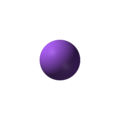Sodium hypochlorite
| Sodium hypochlorite | |
|---|---|

| |
| General | |
| Systematic name | Sodium chlorate (I) |
| Other names |
Sodium Chloride Oxide |
| Molecular formula | NaClO |
| Molar mass | 74.442 g/mol |
| Appearance |
Clear to yellowish liquid |
| CAS number | 7681-52-9[2] |
| Properties | |
| Density | 1.11 g/cm3 |
| Solubility in water | Mixes infinitely in water |
| Melting point | Decomposes at 110°C |
| Boiling point | >100°C |
| Acidity (pKa) | 11.2-11.4 |
| Viscosity |
1.75-2.50 cP |
| Structure | |
| Dipole moment | Not available |
| Hazards | |
| MSDS | Material safety data sheet |
| Main hazards |
Highly toxic, corrosive, |
| NFPA 704 | |
| Flash point | Not available |
| R/S statement | R: 31-34-50 S: 26-36/37/39-45-61 |
| RTECS number | NH3486300 |
| Related compounds | |
| Related compounds |
Hypochlorous acid |
| Except where noted otherwise, data are given for materials in their standard state (at 25 °C, 100 kPa) Disclaimer and references | |
A French chemist, Claude-Louis Berthollet, developed liquid bleaching agents around 1785. They were originally used to bleach cotton, but soon became extremely popular since they were extremely useful for other cleaning purposes as well. In France, they are still referred to as 'eau de Javel,' but are scientifically known as Sodium hypochlorite, or bleach[4]. Sodium hypochlorite is an inorganic compound with the chemical formula NaClO. Bleach serves many purposes in today's world. Some of these include disinfection and purification. However, bleach also has many health hazards and risks, such as difficulty breathing, irritated eyes, and poisoning. [5]
Properties
Sodium hypochlorite is a liquid compound composed of sodium, chlorine, and oxygen in a 1:1:1 ratio. The liquid is a clear to yellowish color with a strong, chlorine odor[6]. Sodium hypochlorite has a molecular weight of 74.442169 grams per mole. The compound is highly toxic when consumed or placed in contact with skin. It has an high pH level of 11.2-11.4. Sodium hypochlorite is infinitely soluble in water[7].
Synthesis
Sodium hypochlorite is an inorganic compound. This means that it does not occur naturally in nature. There are two ways by which sodium hypochlorite can be synthesized, or created. The first method is "by dissolving salt in softened water, which results in a concentrated brine solution"[4]. A sodium hypochlorite solution forms in the water because the solution is electrolyzed. This solution contains 150 grams of active chlorine (Cl2) per liter. Hydrogen gas also forms during this reaction. The second method adds chlorine gas (Cl2) to caustic soda (NaOH). At the completion of this reaction, sodium hypochlorite, water (H2O), and salt (NaCl) are produced. Their production can be seen through the chemical equation: Cl2 + 2NaOH + → NaOCl + NaCl + H2O [4].
Uses
Sodium hypochlorite, a disinfectant and water purifier, can serve a variety of different purposes. Most commonly, sodium hypochlorite is used as bleach. Bleach can be used in laundry to remove stains or whiten clothes. Sodium hypochlorite is also used as chlorine to disinfect and oxidize swimming pools. People sometimes use bleach to remove odors, such as in industrial waste water. Sodium hypochlorite is widely used throughout agriculture. It serves many purposes in the chemical, paint and lime, food, glass, paper, pharmeceutical, synthetics, textile, and waste disposal industries. Sodium hypochlorite also prevents algae and shellfish growth. [4]
Safety
Sodium hypochlorite is a highly toxic, corrosive, and poisonous substance that should only be used in well ventilated areas[8]. If swallowed or inhaled, it can cause difficulty of breathing, vomiting, coughing, stomach ache, diarrhea, sore throat, and even poisoning. When bleach comes in contact with skin, it begins to burn. The skin should be cleansed immediately. Depending on the strength of the substance, some side effects may be more severe. Googles and gloves should be worn when dealing with Sodium hypochlorite. If it enters the eye area, it can cause red and irritated eyes. Bleach should never be consumed, for it can cause internal burns. If it is accidentally swallowed, drink milk or water and do not induce vomiting. After swimming in a chlorinated pool, shower thoroughly to remove any traces of chlorine bleach. [9]
Video
A summary video about Sodium hypochlorite (bleach).
References
- ↑ Sodium hypochlorite Wikipedia. Web. Last-modified December 30, 2015. Author unknown.
- ↑ NFPA 704 RATINGS and ID NUMBERS for COMMON HAZARDOUS MATERIALS Department of Environmental Health. Web. Accessed January 3, 2016. Author unknown.
- ↑ HASA 12.5% SODIUM HYPOCHLORITE SOLUTION Safety Data Sheet HASA. Web. Accessed January 3, 2016. Author unknown.
- ↑ 4.0 4.1 4.2 4.3 Disinfectants Sodium hypochlorite Lenntech. Web. Accessed January 13, 2016. Author unknown.
- ↑ SODIUM HYPOCHLORITE Pubchem. Web. Accessed January 3, 2016. Author unknown.
- ↑ Sodium hypochlorite IPCS INCHEM. Web. Accessed January 3, 2016. Author unknown.
- ↑ SODIUM HYPOCHLORITE CHEMICALLAND21. Web. Accessed January 3, 2016. Author unknown.
- ↑ Sodium hypochlorite ChemSpider. Web. Accessed January 3, 2016. Author unknown.
- ↑ What is Sodium Hypochlorite Powellfab. Web. Accessed January 13, 2016. Author unknown.
| ||||||||||||||





